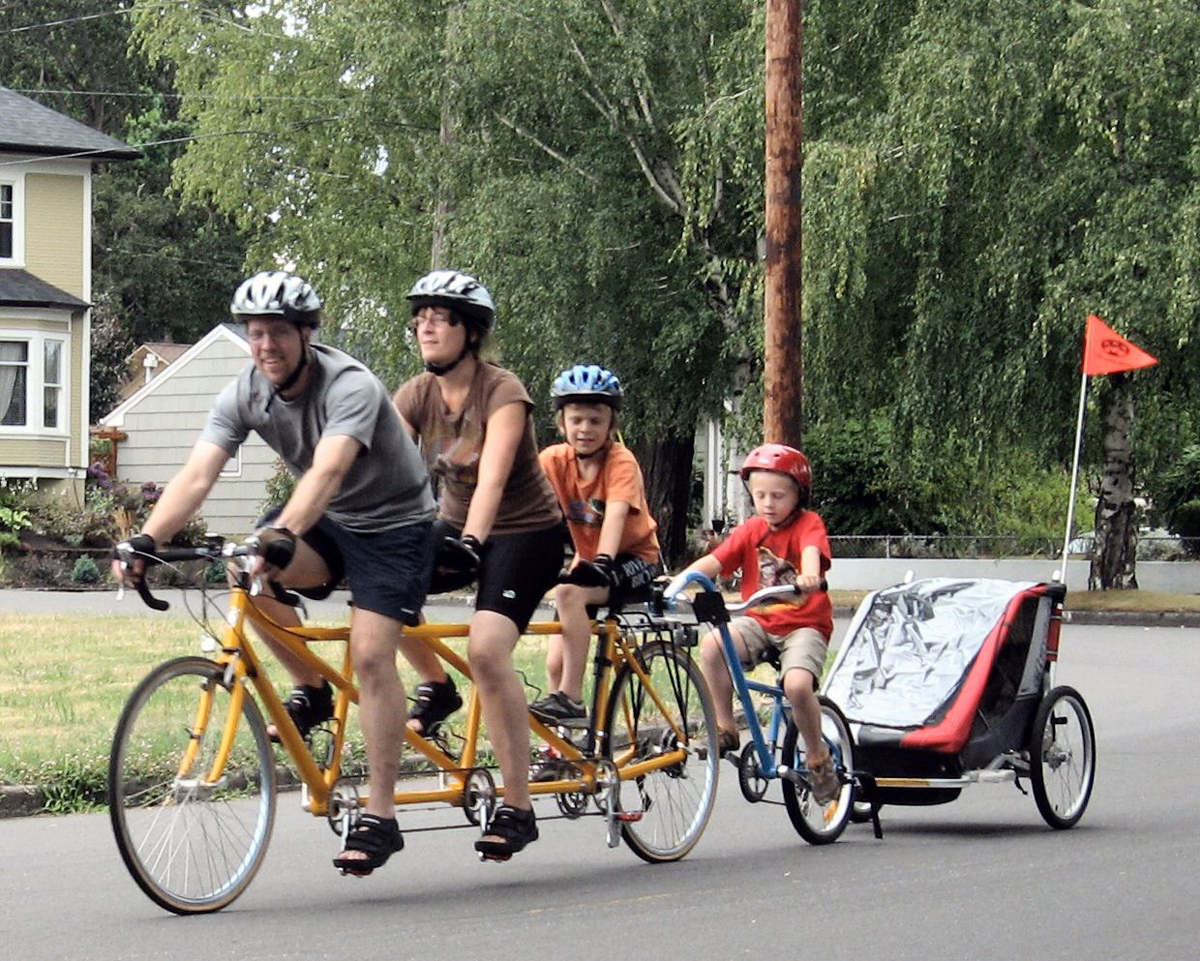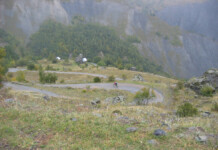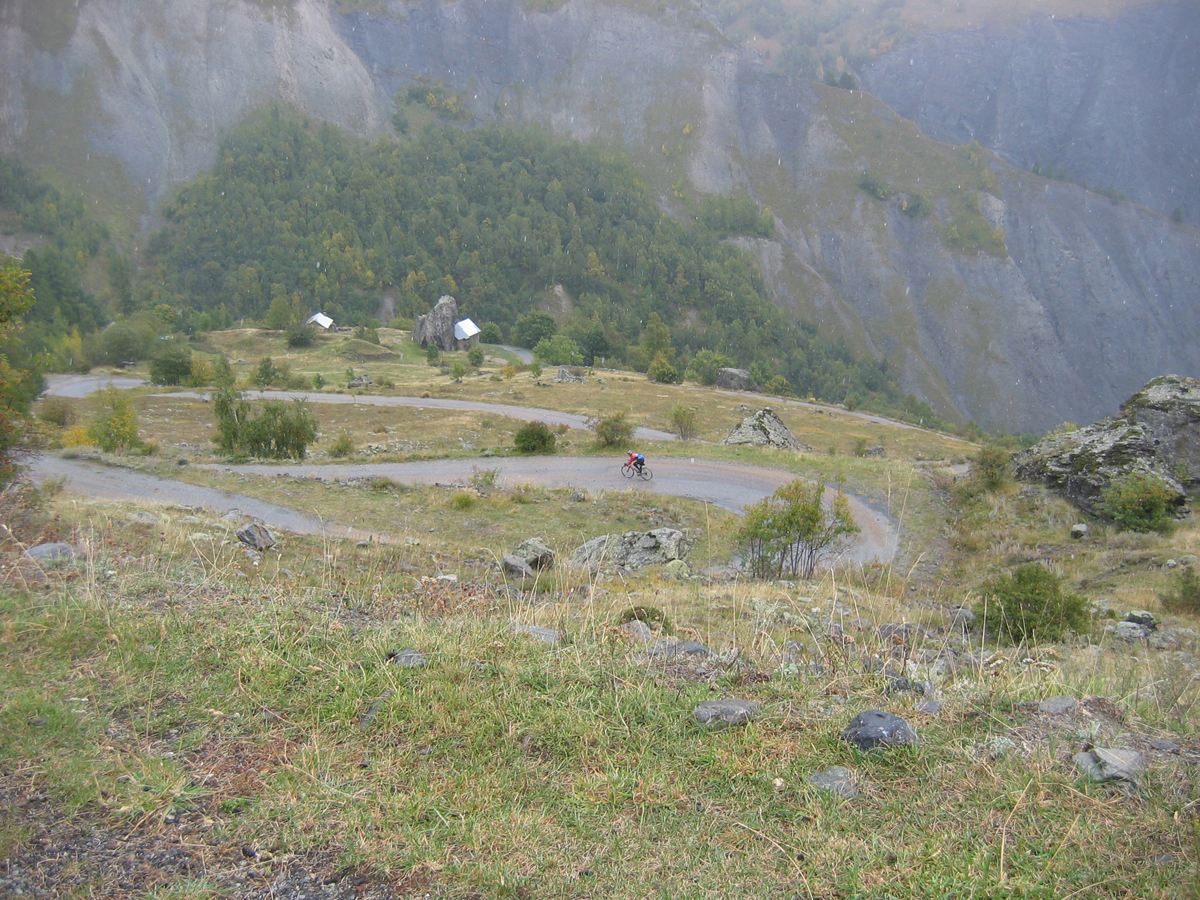By Joe “Metal Cowboy” Kurmaskie — I’m often asked “What’s the hardest part of a bike tour?” Whether we are talking about towing the family around Oregon for a week, planning a cross country summer adventure or an international odyssey, the answer is always the same… and it’s not weight, equipment, training, mapping, packing, money, lodging, food, timing traffic and it’s almost never the actual pain or suffering exacted by hills and wind … it’s attitude. In the words of the Avett Brothers, “Decide what to be, then go be it.” The biggest obstacle to any bike ride is to end the planning and talking and dreaming about the project and actually get into the saddle and pedal. This is not to say that planning and training should be ignored, but I can’t count the number of times people let the planning and training and thinking overwhelm them, letting that trip of a lifetime become the never-ending story of the ride that never happens.

Take maps for instance. It’s good to bring some along, paper and/or electronic, and picking a general direction with a few highlights to see along the way, but don’t let the map dictate the journey because it will ruin the adventure. Steinbeck said it best in Travels With Charley. “A trip, a safari, an exploration is an entity different from all other journeys. it has personality, temperament, individuality, uniqueness. A journey is a person in itself; no two are alike. And all plans, safeguards, policing and coercion are fruitless. We find after years of struggle that we do not take a trip, a trip takes us.
So basically, only when you relax and go with the opportunities that the road reveals, will you get the most satisfaction and complete experience of seeing a country by bicycle.
More from Steinbeck. “For weeks I had studied maps, large scale and small, but maps are not reality at all – they can be tyrants. I know people who are so immersed in road maps that they never see the countryside they pass through, and other who, having traced a route, are held to it as though held by flanged wheels to rails.
Food. Touring cyclists, to a person, load down the rig with too much of it on their first few rides. It’s an easy trap. Cyclists pedaling all day every day burn 4,500-8,000. They crave food and lots of it. So it’s a quick walk across the street from laying in adequate supplies to hold a rider over during longer stretches to hauling around punishing extra weight – food stuff that you will never get to or will get crushed and rot before you get to it. In the first world, you are never more than five or ten miles from supplies.
Training. It makes sense to ride your bike before you ride your bike. And it even makes sense to set up a regular schedule of increasing miles as the tour departure date gets close. Do a ride with the bags loaded with your gear even. But don’t let the training and riding around town become a burden or a distraction or an excuse for postponing the adventure, “Oh, I wasn’t able to do two back to back weekend rides of 100 miles a piece so I can’t go until that happens.” I actually heard this statement from a pair of riders who were more than ready for the rigors of the road. Here’s the thing. Leave your front door in reasonable shape and the road will do the rest. There’s nothing better than ten hours a day in the saddle to whip you into shape. No matter what sort of training schedule you put together beforehand, the first week on tour will leave you sore and tired. It’s called hell week or adjustment week. Once your body understands this is what it does now it will work like a well-oiled machine.
In every aspect of bike touring, it’s the attitude you bring to it that decides your fate. So get on the bike, point it where you want to go, put a grin on your face and a ten years old child’s joy for the moment… and send me a postcard or two – I need to work up a good steam of jealousy, motivate me to stop talking about my next tour and follow my own advice.








